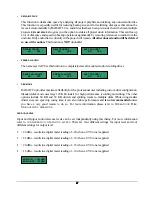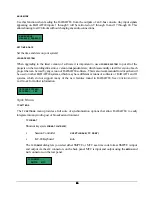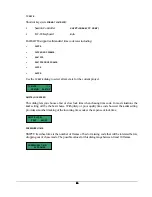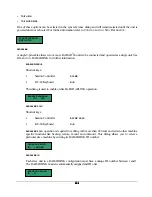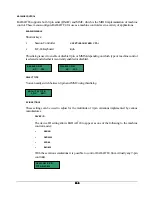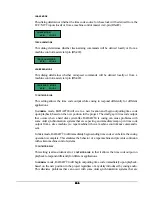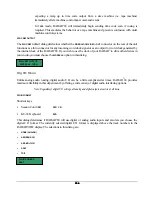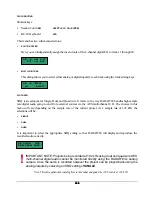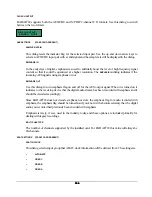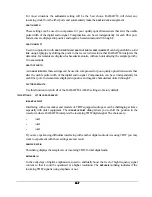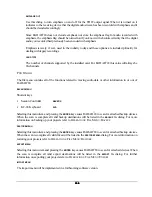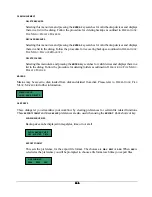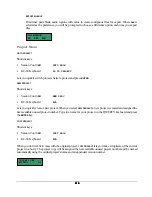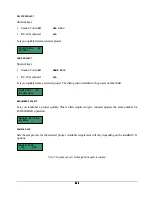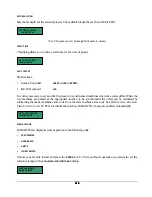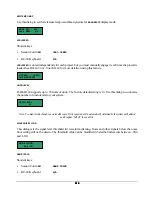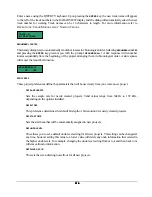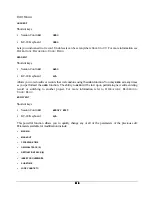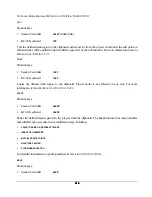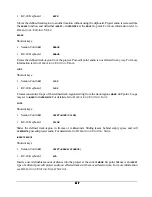
107
107
107
107
For most situations the
AUTOMATIC
setting will be the best choice. RADAR
24 will detect any
incoming clock from the fiber ports and automatically make the
ADAT IN CLOCK
assignment.
ADAT IN WIDTH
These settings can be used to compensate for poor quality optical transceivers that alter the usable
pulse width of the digital audio signal. Compensation can be set independently for each fiber port.
Increments are displayed in positive and negative hexadecimal units 0 through F.
ADAT IN SMPL PT
Used in conjunction with
ADAT IN WIDTH
and
ADAT OUT WIDTH
,
ADAT IN SMPL PT
can help establish a solid
link using Lightpipe by shifting the point in the recovered waveform that RADAR
24 interprets the
data value. Increments are displayed as hexadecimal units, with each unit delaying the sample point by
10 nanoseconds.
ADAT OUT WIDTH
As in
ADAT IN WIDTH,
these settings can be used to compensate for poor quality optical transceivers that
alter the usable pulse width of the digital audio signal. Compensation can be set independently for
each fiber port. Increments are displayed in positive and negative hexadecimal units 0 through F.
FACTORY
DEFAULTS
Use this function to return all of the RADAR
24’s ADAT settings to factory default.
TDIF SETTINGS
(IF TDIF CARD PRESENT)
IN SAMPLE POINT
Interfacing with some makes and models of TDIF equipped audio gear can be challenging at times,
especially with older equipment. The
IN SAMPLE POINT
dialog allows you to shift the position in the
waveform where RADAR
24 interprets the incoming TDIF digital signal. The choices are:
!
¼ BIT
!
½ BIT
!
¾ BIT
If you are experiencing difficulties interfacing with another digital audio device using TDIF you may
want to experiment with these settings as a last resort.
SAMPLE RATE IN
This dialog displays the sample rate of incoming TDIF format digital audio.
EMPHASIS
IN
In the early days of digital, emphasis was used to artificially boost the level of high frequency signal
content so that it could be quantized at a higher resolution. The
EMPHASIS IN
dialog indicates if the
incoming TDIF signal is using emphasis or not.





